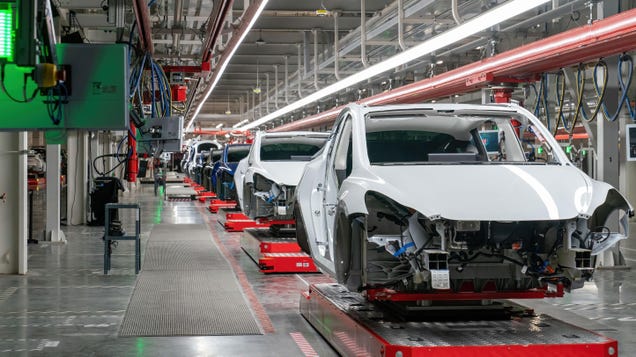Understanding the Challenges at Tesla’s Gigafactory: A Deep Dive into Workplace Issues
Tesla has long been a symbol of innovation and disruption in the automotive industry, but beneath its sleek exterior lies a troubling narrative regarding workplace conditions. Reports from various sources indicate that employees at Tesla’s facilities, including the Gigafactory in Austin, Texas, have faced significant challenges, ranging from allegations of sexual harassment and racism to unsafe working conditions. This article explores these issues in detail, providing insights into the implications for employees, the company, and the broader industry.
Examining Allegations of Workplace Harassment
One of the most pressing concerns raised by current and former Tesla employees is the prevalence of sexual harassment within the company. Numerous accounts detail incidents where workers have faced inappropriate comments and unwanted advances, creating a toxic work environment. A 2021 report by the California Department of Fair Employment and Housing highlighted systemic issues related to harassment and discrimination at Tesla’s Fremont factory, which has set a precedent for similar claims across its other facilities.
The impact of such a hostile work environment extends beyond individual experiences; it can lead to decreased morale, increased turnover, and potential legal ramifications for the company. A 2022 study published in the Journal of Occupational Health Psychology found that workplaces with high levels of harassment often experience a significant decline in employee productivity and engagement. This not only affects the workforce but can also tarnish the company’s public image and brand reputation.
Racial Discrimination and Its Consequences
In addition to harassment, allegations of racial discrimination have surfaced within Tesla’s workforce. Reports indicate that Black employees have faced a disproportionate amount of discriminatory behavior, including being subjected to racial slurs and unfair treatment compared to their white counterparts. The legal implications of these allegations are serious; Tesla has already faced lawsuits related to racial discrimination, which could result in substantial financial penalties and damage to its reputation.
A 2020 study by the Pew Research Center found that nearly 60% of Black workers reported experiencing discrimination in the workplace. This statistic underscores the urgency for companies like Tesla to address these issues proactively. Failure to do so not only jeopardizes employee well-being but also poses a risk to the company’s ability to attract and retain a diverse workforce, which is increasingly important in today’s global economy.
Safety Concerns and Their Implications
Unsafe working conditions are another critical issue reported by Tesla employees. Concerns have been raised about inadequate safety measures, leading to accidents and injuries on the job. For instance, a recent incident at the Gigafactory in Austin resulted in a worker’s death, prompting investigations by federal authorities. Such events highlight the need for Tesla to prioritize employee safety and adhere to regulatory standards.
According to the Occupational Safety and Health Administration (OSHA), workplace injuries cost U.S. businesses billions annually. Moreover, companies that fail to maintain safe working environments can face severe penalties and increased insurance costs. A commitment to safety not only protects employees but also enhances overall operational efficiency and productivity.
The Path Forward: Addressing Workplace Issues
Tesla’s leadership must take decisive action to address these pervasive issues. Implementing comprehensive training programs focused on diversity, equity, and inclusion can help foster a more respectful and supportive workplace culture. Additionally, establishing clear reporting mechanisms for harassment and discrimination can empower employees to voice their concerns without fear of retaliation.
Moreover, enhancing safety protocols and ensuring compliance with industry standards is essential for protecting workers and maintaining Tesla’s reputation as a leader in innovation. Regular safety audits and employee feedback mechanisms can help identify potential hazards and areas for improvement.
Engaging with employees through open forums and surveys can also provide valuable insights into their experiences and perceptions, allowing the company to make informed decisions that prioritize worker well-being.
Conclusion: A Call for Change
As Tesla continues to grow and expand its operations, addressing these workplace issues is not just a moral imperative but a business necessity. By fostering a safe, inclusive, and respectful work environment, Tesla can enhance employee satisfaction, improve productivity, and solidify its position as a leader in the automotive industry. The road ahead may be challenging, but with commitment and action, Tesla has the opportunity to transform its workplace culture for the better.

